Haozhe Feng
DataLab: A Unified Platform for LLM-Powered Business Intelligence
Dec 04, 2024
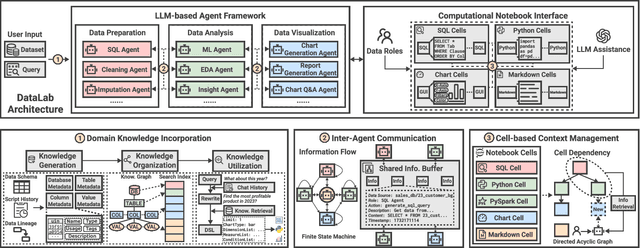

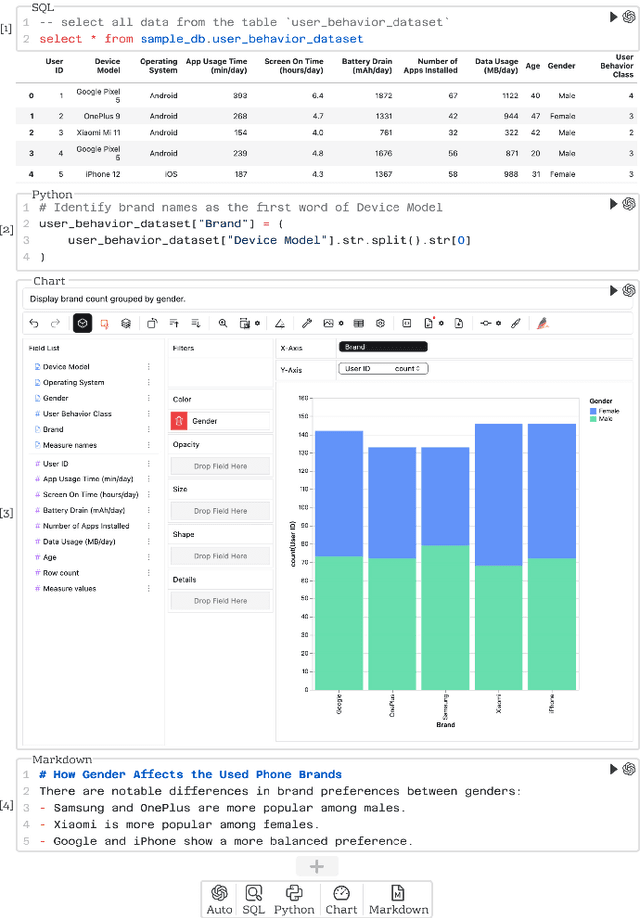
Abstract:Business intelligence (BI) transforms large volumes of data within modern organizations into actionable insights for informed decision-making. Recently, large language model (LLM)-based agents have streamlined the BI workflow by automatically performing task planning, reasoning, and actions in executable environments based on natural language (NL) queries. However, existing approaches primarily focus on individual BI tasks such as NL2SQL and NL2VIS. The fragmentation of tasks across different data roles and tools lead to inefficiencies and potential errors due to the iterative and collaborative nature of BI. In this paper, we introduce DataLab, a unified BI platform that integrates a one-stop LLM-based agent framework with an augmented computational notebook interface. DataLab supports a wide range of BI tasks for different data roles by seamlessly combining LLM assistance with user customization within a single environment. To achieve this unification, we design a domain knowledge incorporation module tailored for enterprise-specific BI tasks, an inter-agent communication mechanism to facilitate information sharing across the BI workflow, and a cell-based context management strategy to enhance context utilization efficiency in BI notebooks. Extensive experiments demonstrate that DataLab achieves state-of-the-art performance on various BI tasks across popular research benchmarks. Moreover, DataLab maintains high effectiveness and efficiency on real-world datasets from Tencent, achieving up to a 58.58% increase in accuracy and a 61.65% reduction in token cost on enterprise-specific BI tasks.
DataLab: A Unifed Platform for LLM-Powered Business Intelligence
Dec 03, 2024



Abstract:Business intelligence (BI) transforms large volumes of data within modern organizations into actionable insights for informed decision-making. Recently, large language model (LLM)-based agents have streamlined the BI workflow by automatically performing task planning, reasoning, and actions in executable environments based on natural language (NL) queries. However, existing approaches primarily focus on individual BI tasks such as NL2SQL and NL2VIS. The fragmentation of tasks across different data roles and tools lead to inefficiencies and potential errors due to the iterative and collaborative nature of BI. In this paper, we introduce DataLab, a unified BI platform that integrates a one-stop LLM-based agent framework with an augmented computational notebook interface. DataLab supports a wide range of BI tasks for different data roles by seamlessly combining LLM assistance with user customization within a single environment. To achieve this unification, we design a domain knowledge incorporation module tailored for enterprise-specific BI tasks, an inter-agent communication mechanism to facilitate information sharing across the BI workflow, and a cell-based context management strategy to enhance context utilization efficiency in BI notebooks. Extensive experiments demonstrate that DataLab achieves state-of-the-art performance on various BI tasks across popular research benchmarks. Moreover, DataLab maintains high effectiveness and efficiency on real-world datasets from Tencent, achieving up to a 58.58% increase in accuracy and a 61.65% reduction in token cost on enterprise-specific BI tasks.
Self-Distillation Bridges Distribution Gap in Language Model Fine-Tuning
Feb 21, 2024



Abstract:The surge in Large Language Models (LLMs) has revolutionized natural language processing, but fine-tuning them for specific tasks often encounters challenges in balancing performance and preserving general instruction-following abilities. In this paper, we posit that the distribution gap between task datasets and the LLMs serves as the primary underlying cause. To address the problem, we introduce Self-Distillation Fine-Tuning (SDFT), a novel approach that bridges the distribution gap by guiding fine-tuning with a distilled dataset generated by the model itself to match its original distribution. Experimental results on the Llama-2-chat model across various benchmarks demonstrate that SDFT effectively mitigates catastrophic forgetting while achieving comparable or superior performance on downstream tasks compared to the vanilla fine-tuning. Moreover, SDFT demonstrates the potential to maintain the helpfulness and safety alignment of LLMs. Our code is available at \url{https://github.com/sail-sg/sdft}.
CoSDA: Continual Source-Free Domain Adaptation
Apr 13, 2023



Abstract:Without access to the source data, source-free domain adaptation (SFDA) transfers knowledge from a source-domain trained model to target domains. Recently, SFDA has gained popularity due to the need to protect the data privacy of the source domain, but it suffers from catastrophic forgetting on the source domain due to the lack of data. To systematically investigate the mechanism of catastrophic forgetting, we first reimplement previous SFDA approaches within a unified framework and evaluate them on four benchmarks. We observe that there is a trade-off between adaptation gain and forgetting loss, which motivates us to design a consistency regularization to mitigate forgetting. In particular, we propose a continual source-free domain adaptation approach named CoSDA, which employs a dual-speed optimized teacher-student model pair and is equipped with consistency learning capability. Our experiments demonstrate that CoSDA outperforms state-of-the-art approaches in continuous adaptation. Notably, our CoSDA can also be integrated with other SFDA methods to alleviate forgetting.
Does Federated Learning Really Need Backpropagation?
Jan 28, 2023Abstract:Federated learning (FL) is a general principle for decentralized clients to train a server model collectively without sharing local data. FL is a promising framework with practical applications, but its standard training paradigm requires the clients to backpropagate through the model to compute gradients. Since these clients are typically edge devices and not fully trusted, executing backpropagation on them incurs computational and storage overhead as well as white-box vulnerability. In light of this, we develop backpropagation-free federated learning, dubbed BAFFLE, in which backpropagation is replaced by multiple forward processes to estimate gradients. BAFFLE is 1) memory-efficient and easily fits uploading bandwidth; 2) compatible with inference-only hardware optimization and model quantization or pruning; and 3) well-suited to trusted execution environments, because the clients in BAFFLE only execute forward propagation and return a set of scalars to the server. Empirically we use BAFFLE to train deep models from scratch or to finetune pretrained models, achieving acceptable results. Code is available in https://github.com/FengHZ/BAFFLE.
An Interactive Insight Identification and Annotation Framework for Power Grid Pixel Maps using DenseU-Hierarchical VAE
May 22, 2019
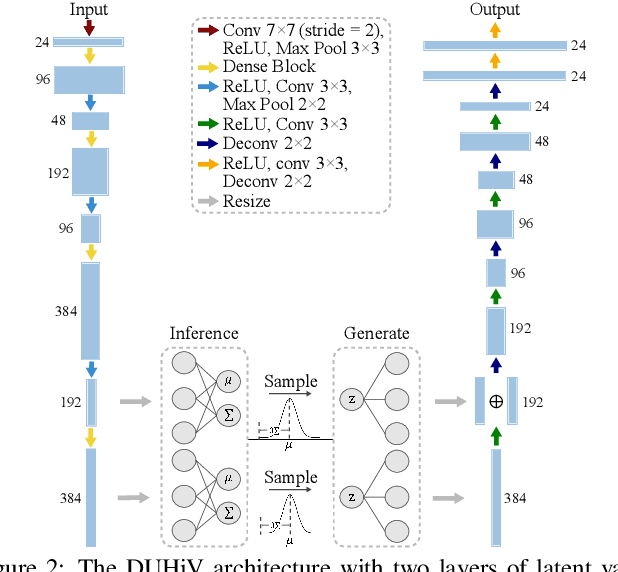
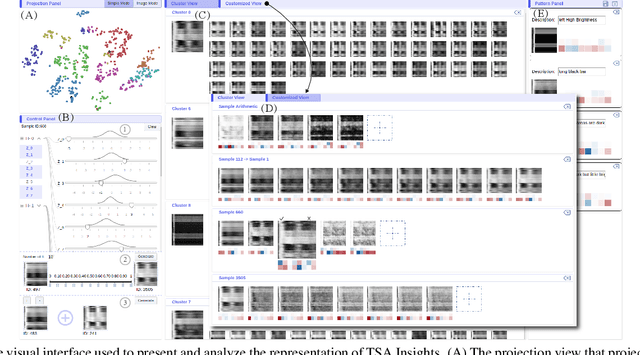
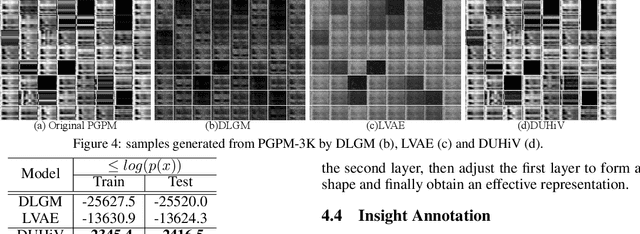
Abstract:Insights in power grid pixel maps (PGPMs) refer to important facility operating states and unexpected changes in the power grid. Identifying insights helps analysts understand the collaboration of various parts of the grid so that preventive and correct operations can be taken to avoid potential accidents. Existing solutions for identifying insights in PGPMs are performed manually, which may be laborious and expertise-dependent. In this paper, we propose an interactive insight identification and annotation framework by leveraging an enhanced variational autoencoder (VAE). In particular, a new architecture, DenseU-Hierarchical VAE (DUHiV), is designed to learn representations from large-sized PGPMs, which achieves a significantly tighter evidence lower bound (ELBO) than existing Hierarchical VAEs with a Multilayer Perceptron architecture. Our approach supports modulating the derived representations in an interactive visual interface, discover potential insights and create multi-label annotations. Evaluations using real-world PGPMs datasets show that our framework outperforms the baseline models in identifying and annotating insights.
 Add to Chrome
Add to Chrome Add to Firefox
Add to Firefox Add to Edge
Add to Edge